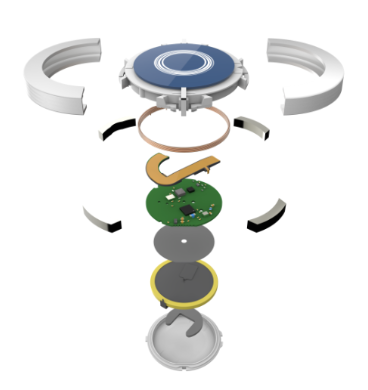Carnival Corporation: MagicBand 2.0?

Carnival Corporation, one of the world’s leading cruise operators, uses data and technology at its core for operational improvement, cost reduction and guest experiences at scale with their Ocean Medallion IoT wearable device and Microsoft’s Azure cloud-native edge services.
Carnival Corporation, one of the world’s leading cruise operators, uses data and technology at its core for operational improvement, cost reduction and guest experiences at scale. Two initiatives integral to their tech strategy are the Ocean Medallion IoT wearable device, a product of their OCEAN guest experience strategy1 and Microsoft’s Azure cloud-native edge services.
Carnival runs complicated operations that include more than 100 ships that travel to 740 destinations in the United States, Canada, Mexico, Europe, Asia, and Australia with 33,000 crew members and 13 million guests per year. In an attempt to optimize its performance, they envisaged an opportunity to turn cruise ships into “smart cities at sea.”2
They began to revamp their existing tech strategy with a change that began with guest experiences. In 2015, they launched OCEAN (One Cruise Experience Access Network) an integrated guest experience platform with a secure experience Internet of Things (xIoT) network and streaming analytics3. At the 2017 Consumer Electronics Show, John Padgett, Chief Experience and Innovation Officer, introduced the Ocean Medallion, a wearable device that integrates into OCEAN and provides insights into their customer behavior and movement4 called “Guest Genomics,”5.
Until 2015, data was being collected within individual systems that remained in silos. In order to understand their customer movements and improve efficiency, Padgett believed in creating a closed ecosystem within each ship, with over 72 miles of cable, 6,000 sensors, 650 readers, 500 edge computing devices and more than 4,000 interactive portals.6 The real-time intelligence generated is linked to every guest, powering Carnival’s Experiential Internet of ThingsTM (xIoT) network. This network enables personalized guest experiences using location, provided personal information, and onboard interactions as key factors.6 According to Padgett, who was one of the key players in creating MagicBands at Disney, “Magic Kingdom is one of the best experiences in the world, but it’s a commodity experience. Everyone who pays to go there gets the same experience… To deliver true personalization, we need the information the guest is creating in that very second to be reinvested in their experience that very same second.”
From a Carnival guest perspective, OCEAN Medallion improved both the efficiency of their administrative activities and allowed them to spend time on activities tailored to them onboard. For instance, guests spent 90% less time completing pre-departure steps with OCEAN, from 10 minutes to 30 seconds.8 The medallion also offered intelligent navigation throughout the ship allowing guests to get to their desired locations in less time and gave personalized recommendations for locations and events.9 It became one of the first companies to use analytics and data to provide real-time insight to each specific guest at the right moment to serve, delight.10 This technology driven (as opposed to technology focused) seamless experience resulted in an increase in returning guests. Additionally, targeted recommendations and reduction of administrative time resulted in customers spending more time and money at events they attended.11 The switch from a commodity service also allowed Carnival to charge its customers premium rates.
The Medallion also improved employee optimization. Given that cruises have restricted “number of souls onboard”, the more staff you have, the less guests you have and the less revenue-generating potential is available.11 The location, density and activities of the guests in real time allowed Carnival to deploy crew efficiently and increase their time off.
This resulted in a few challenges for the company. The first were concerns around user privacy – guests felt “tracked” at all times. The second was data storage and processing – the ship could produce two million records per day that needed to be parsed and analyzed to a usable format. A third was inconsistencies in data quality and infrastructure between ships, given the closed ecosystem for personalization.
In order to combat some of these issues, in 2023, the company adopted Azure’s IoT Edge services, allowing them to streamline and unify their operations by having a standardized way of deploying architecture. Additionally, Azure gave them the ability to integrate their Medallion with Digital Twins12 and further optimize their labor force, given the highly geographic nature of operations.
The introduction of Edge computing with IoT has placed Carnival in a position to use low latency ML solutions across their operations. For instance, for operations, real-time optimized paths for crew members undertaking a task based on crowds and predicted future tasks. Additionally, it allows them to expand its use outside of guest experience and operations, like improving sustainability efforts or inventory management. A unified architecture also allows them to learn from predictions based on events on other ships.



Citations
- Accenture, “A Sea of Change for a Carnival Corporation”, Accenture July 2019,
- Bernard Marr, “The Amazing Ways Carnival Cruises Is Using IOT and AI to Create Smart Cities at Sea,” Forbes, March 22, 2019, https://www.forbes.com/sites/bernardmarr/2019/03/22/the-amazing-ways-carnival-cruises-is-using-iot-and-ai-to-create-smart-cities-at-sea/?sh=6c3d46945a64.
- Accenture, “A Sea of Change for a Carnival Corporation”, Accenture July 2019,
- Accenture, High-Tech High-Touch Personalization for Carnival Corporation, July 2020, https://www.accenture.com/content/dam/accenture/final/a-com-migration/manual/r3/pdf/pdf-110/Accenture-Interactive-Carnival-Corporation-Credential-fixed.pdf
- Michal Christine Escobar Senior Editor, “Carnival’s Oceanmedallion Tech: The Wave of the Future,” Hospitality Technology, December 17, 2021, https://hospitalitytech.com/carnivals-oceanmedallion-tech-wave-future.
- Michal Christine Escobar Senior Editor, “Carnival’s Oceanmedallion Tech: The Wave of the Future,” Hospitality Technology, December 17, 2021, https://hospitalitytech.com/carnivals-oceanmedallion-tech-wave-future.
- Accenture, “Carnival Guest Experience Case Study,” Accenture, February 28, 2023, https://www.accenture.com/us-en/case-studies/travel/carnival-cruise.
- Bernard Marr, “The Amazing Ways Carnival Cruises Is Using IOT and AI to Create Smart Cities at Sea,” Forbes, March 22, 2019, https://www.forbes.com/sites/bernardmarr/2019/03/22/the-amazing-ways-carnival-cruises-is-using-iot-and-ai-to-create-smart-cities-at-sea/?sh=6c3d46945a64.
- Accenture, High-Tech High-Touch Personalization for Carnival Corporation, July 2020, https://www.accenture.com/content/dam/accenture/final/a-com-migration/manual/r3/pdf/pdf-110/Accenture-Interactive-Carnival-Corporation-Credential-fixed.pdf
- Michal Christine Escobar Senior Editor, “Carnival’s Oceanmedallion Tech: The Wave of the Future,” Hospitality Technology, December 17, 2021, https://hospitalitytech.com/carnivals-oceanmedallion-tech-wave-future.
“Carnival Corporation Sets Sail to the Edge and Achieves Enhanced Agility with Azure Arc–Enabled Infrastructure,” Microsoft Customers Stories, accessed October 16, 2023, https://customers.microsoft.com/EN-AU/story/1624878639257824742-carnival-corporation-travel-transportation-azure-stack-hci.



Thanks so much for an informative post, Sreeni. I appreciate you laying out the context Carnival was operating in and why it makes sense for them to streamline operations through digital sensors and technologies (reminds me a lot of the Dominoes and Amgen cases we studied in class).
I’m curious how Carnival is dealing with the 3 challenges you mentioned: privacy, data storage, and inconsistencies. Specifically on inconsistencies, why do you think the data quality differs drastically across ships and do you think that is detrimental to the kinds of ML models they are trying to develop using this data?
Cool stuff Sreeni! I like how this post interacts with Eleanor’s one on Disney wearable bands. Like in the Disney case, I wonder why Carnival didn’t consider doing this through an app in the first place, since wearable technology is expensive and the app could probably do all the things a wristband could do. Moreover, given the customers’ unease over being tracked, I think an app on their phone would be less salient than having a wristband on them always. Do you have a sense of why they decided to go through a wearable IOT device?
It’s really awesome that Carnival is being so forward thinking with adopting this new technology. A cruise ship is the perfect place to run experiments on new offerings, and I can see it being a valuable experimentation engine for the company going forward. While I understand the privacy concerns, I would also say that a cruise ship should not be the place that people go to if they are looking for privacy 🙂 Besides, they could always just opt out of wearing the tracker.
This idea of using the Medallion to reduce labor hours is very interesting; while I’m not sure how they were able to reduce pre-departure time so drastically, I can imagine a world where this technology can offer helpful directions that can reduce the need for human guidance even further, and at ever step of the cruise process. It also makes it easier to highlight bad actors, or unwanted behaviors, on the ship, and I can see it having value in helping with contact tracing, or otherwise being able to detect anomalous behavior.
This is great, Sreeni! I find it interesting how Carnival has constructed a data platform and redefined its brand around Medallion. I’ve never taken a Carnival Cruise, but it seems to me like what used to characterize the cruise-ship experience is fundamentally different when wearable, data-collecting technology is offered to passengers. In addition to the very reasonable privacy concerns, I’m interested in learning more about how the Medallions were marketed to clients.